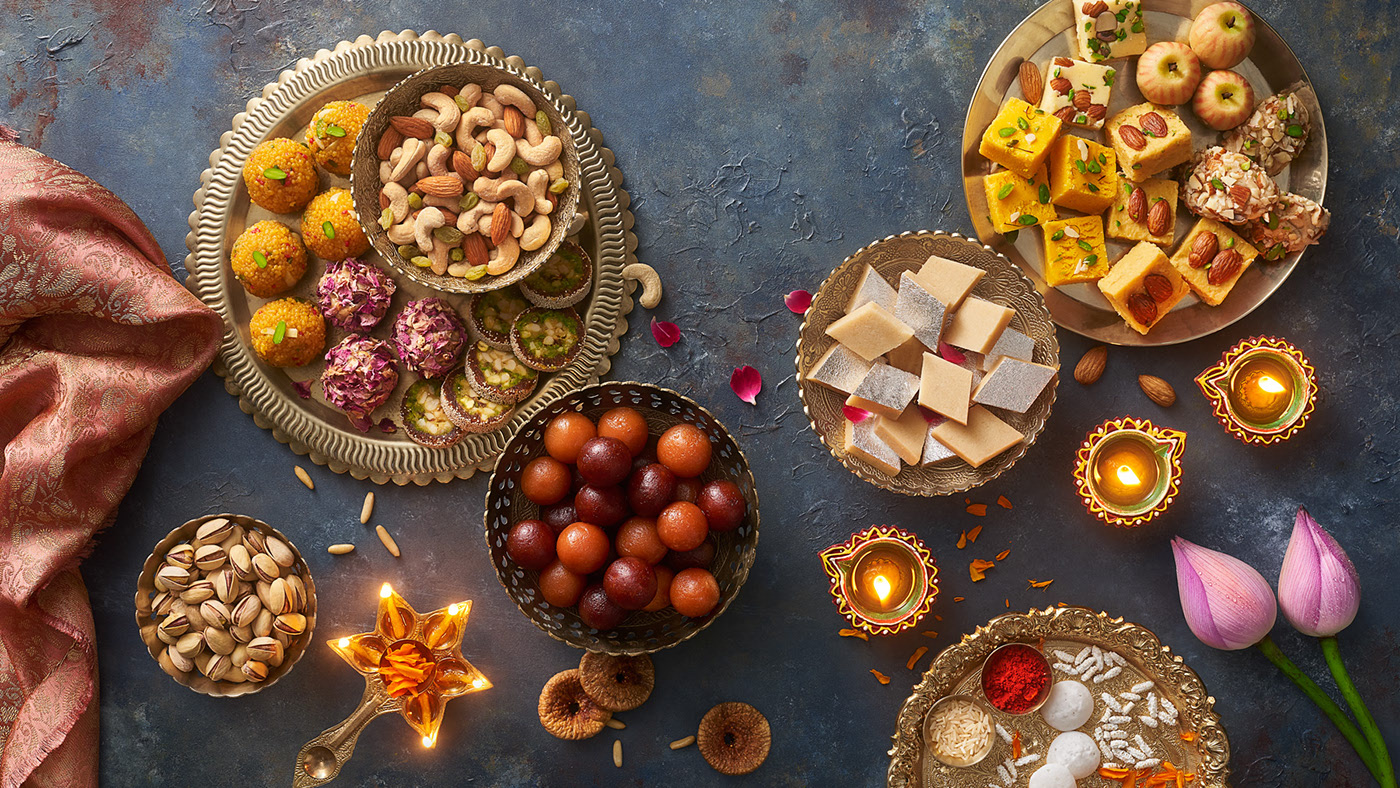
SNACKS AND SWEETS
Iran is renowned for its diverse range of snacks and sweets, which have a rich cultural heritage and unique flavors. Here are some key points about Iran’s snacks and sweets exports:
Popular Iranian Snacks and Sweets for Export
Pistachios and Other Nuts: Iran is one of the world’s largest producers of pistachios. Iranian pistachios are highly sought after for their quality and taste. Other popular nuts include almonds, walnuts, and hazelnuts.
Saffron: Often referred to as “red gold,” Iranian saffron is famous for its aroma, color, and flavor. It is used in a variety of sweets and savory dishes.
Gaz: This is a Persian nougat made from the sap of the angebin plant, mixed with nuts (usually pistachios or almonds) and flavored with rosewater.
Sohan: A traditional Persian saffron brittle toffee, typically made with flour, sugar, butter, saffron, cardamom, rosewater, and nuts.
Baklava: Iranian baklava is slightly different from its Turkish counterpart, often featuring a mixture of rosewater, cardamom, and various nuts.
Persian Dates: Iran produces a wide variety of dates, with Mazafati, Piarom, and Kabkab being some of the most popular types. Dates are often enjoyed plain or filled with nuts.
Ranginak: A dessert made with dates, nuts, and spices, usually served during the Persian New Year (Nowruz).
Lavashak: This is a type of Persian fruit leather made from various fruits, often sour in taste, and is a popular snack.
Export Markets
Iran exports its snacks and sweets to many countries around the world, including:
Middle Eastern Countries: Neighboring countries are major importers of Iranian sweets and nuts due to cultural similarities and geographical proximity.
European Union: There is a growing market for premium Iranian nuts and saffron in countries like Germany, France, and Italy.
Asia: Countries like China, India, and Japan are significant importers of Iranian saffron, nuts, and sweets.
North America: There is a niche market for Iranian products among the Iranian diaspora and specialty food enthusiasts in the United States and Canada.
Challenges and Opportunities
Quality Standards: Maintaining high-quality standards and meeting international regulations are crucial for the success of exports.
Sanctions: Economic sanctions have posed challenges for Iranian exporters, affecting their ability to trade freely in some international markets.
Branding and Marketing: Effective branding and marketing strategies are essential to increase the visibility and appeal of Iranian snacks and sweets in global markets.
Conclusion
Iranian snacks and sweets, with their unique flavors and high-quality ingredients, hold a special place in the global market. Despite facing challenges, the demand for these products continues to grow, driven by their rich cultural heritage and distinctive taste.
There are several compelling reasons to consider purchasing snacks and sweets products from Iran:
Unique and Rich Flavors
Iranian snacks and sweets offer a distinctive taste that sets them apart from other global products. The use of traditional ingredients such as saffron, rosewater, cardamom, and high-quality nuts gives these products a unique and authentic flavor profile.
High-Quality Ingredients
Iran is known for producing some of the world’s finest nuts, fruits, and spices. For example:
Pistachios: Iranian pistachios are renowned for their superior taste and texture.
Saffron: Often called “red gold,” Iranian saffron is prized for its deep color, strong aroma, and rich flavor.
Dates and Dried Fruits: The country’s climate is ideal for growing high-quality dates and other dried fruits, which are packed with nutrients.
Nutritional Benefits
Many Iranian snacks and sweets are not only delicious but also nutritious. They often contain high levels of minerals, vitamins, and antioxidants. For instance:
Nuts: Rich in healthy fats, protein, and minerals like magnesium and potassium.
Dried Fruits: A good source of fiber, vitamins, and minerals.
Saffron: Contains antioxidants and has various potential health benefits.
Cultural Heritage and Tradition
Iranian sweets and snacks are steeped in centuries of tradition, often crafted using age-old recipes and methods. Purchasing these products offers a taste of Persian culture and history.
Diverse Product Range
Iran offers a wide variety of snacks and sweets to suit different tastes and preferences. From the delicate flavors of Gaz and Baklava to the robust taste of Sohan and Lavashak, there’s something for everyone.
Sustainability and Natural Farming Practices
Many Iranian farmers and producers use traditional and sustainable farming practices. This focus on natural and organic methods often results in higher-quality and environmentally friendly products.
Growing Global Recognition
Iranian products are gaining international acclaim for their quality and unique characteristics. Buying these products supports this positive trend and helps promote cultural exchange and diversity in global food markets.
Supporting Local Economies
Purchasing Iranian snacks and sweets helps support local farmers, artisans, and businesses, contributing to the economic development of the region.
Innovation and Packaging
Iranian producers are increasingly adopting modern packaging techniques to ensure that their products remain fresh and appealing to international consumers. This focus on quality control and presentation makes them a great choice for discerning buyers.
Summary
Buying snacks and sweets from Iran allows you to enjoy unique, high-quality, and nutritious products that are rich in cultural heritage. It also supports sustainable farming practices and local economies, making it a choice that benefits both the consumer and the producer.

